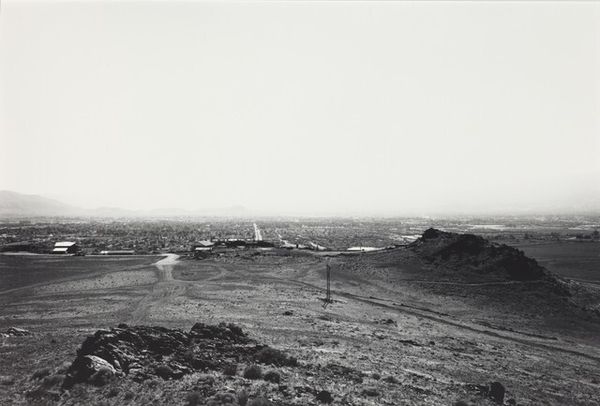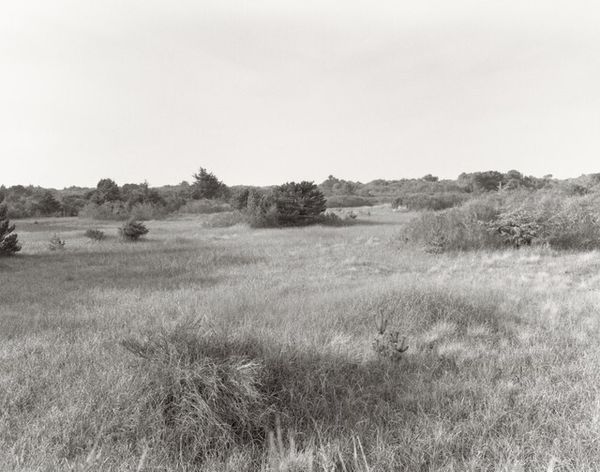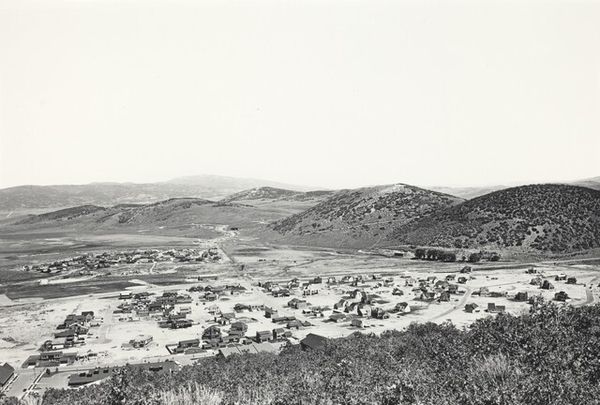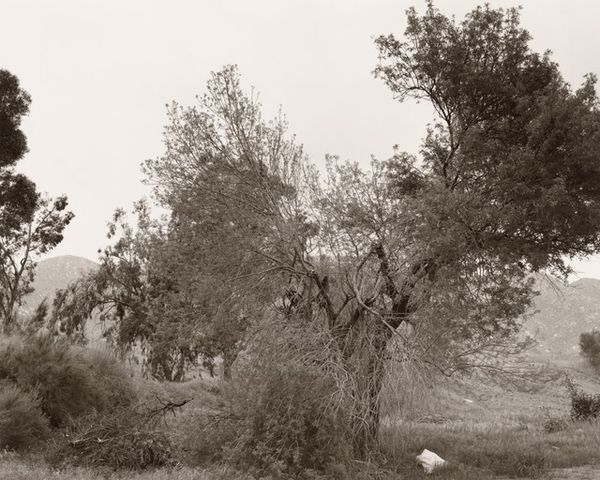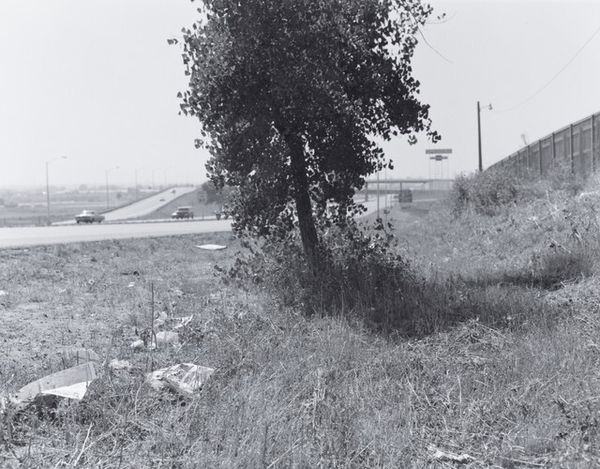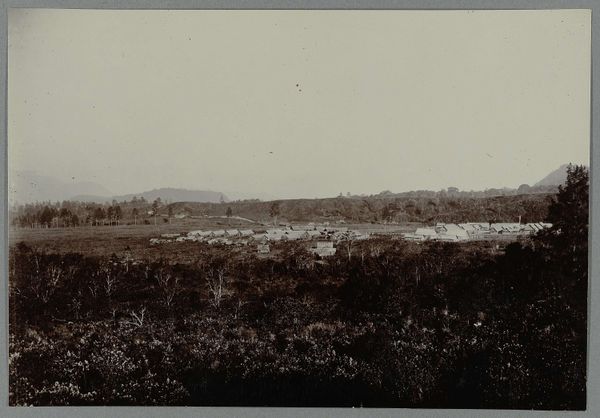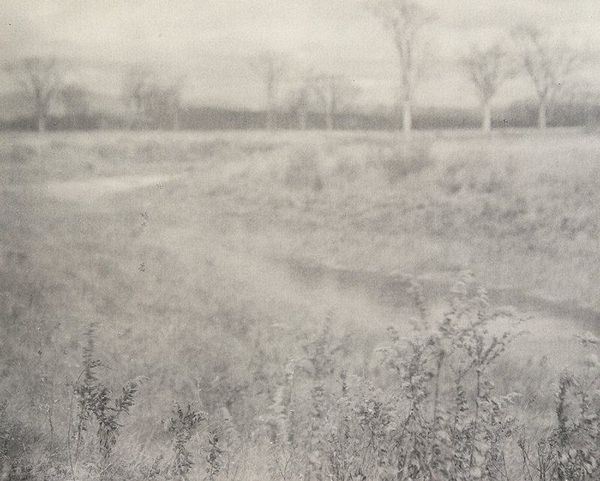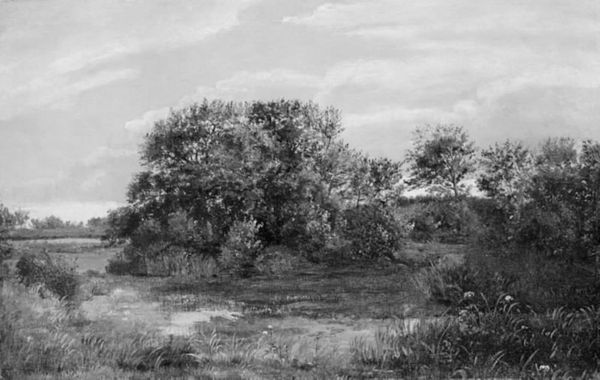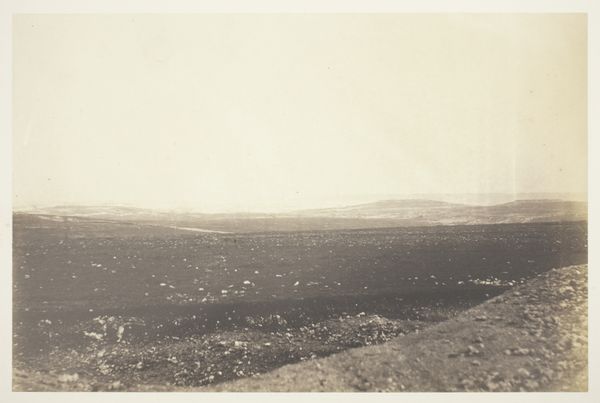
photography, gelatin-silver-print
#
conceptual-art
#
black and white photography
#
landscape
#
black and white format
#
photography
#
gelatin-silver-print
#
monochrome photography
#
monochrome
#
monochrome
Dimensions: image: 18.8 × 22.9 cm (7 3/8 × 9 in.) sheet: 20.32 × 25.4 cm (8 × 10 in.)
Copyright: National Gallery of Art: CC0 1.0
Editor: This is Lewis Baltz's "San Quentin Point, no. 2," a gelatin-silver print, likely from between 1982 and 1985. The composition is… unsettling, I think. It’s this stark black and white landscape, but there’s something vaguely industrial and definitely barren about it. What's your take on it? Curator: Unsettling is a good word. Baltz often focused on landscapes transformed, sometimes scarred, by human activity. Think about San Quentin itself. What associations does that name evoke, and how does this seemingly bland landscape contrast with those preconceptions? Editor: Prison. Incarceration. The criminal justice system. But visually, the image feels… empty. Not necessarily in a despairing way, more like a kind of neutral observation. Curator: Exactly. And this is where the activist reading comes in. Baltz isn’t just showing us a landscape; he's hinting at power structures. Who is imprisoned? Who profits from that imprisonment? The 'emptiness' you perceive might be a reflection of the societal invisibility of incarceration. What does it mean to situate a prison within this specific landscape? Is it trying to be hidden, ignored? Editor: So, the choice of subject, next to a place associated with confinement, makes a political statement? Curator: Precisely. Consider also the technical aspects: the stark contrast, the seemingly artless composition. Are these choices serving to flatten the subject, depersonalize it? And for what purpose? He is confronting the romanticized view of landscape, often excluding marginalized realities. Editor: It’s more than just a picture of a place, then. It makes you think about the narratives and issues behind it. Thank you. Curator: Absolutely. Art at its best forces us to confront uncomfortable truths about power and social injustice. Hopefully Baltz inspires you to do just that.
Comments
No comments
Be the first to comment and join the conversation on the ultimate creative platform.
